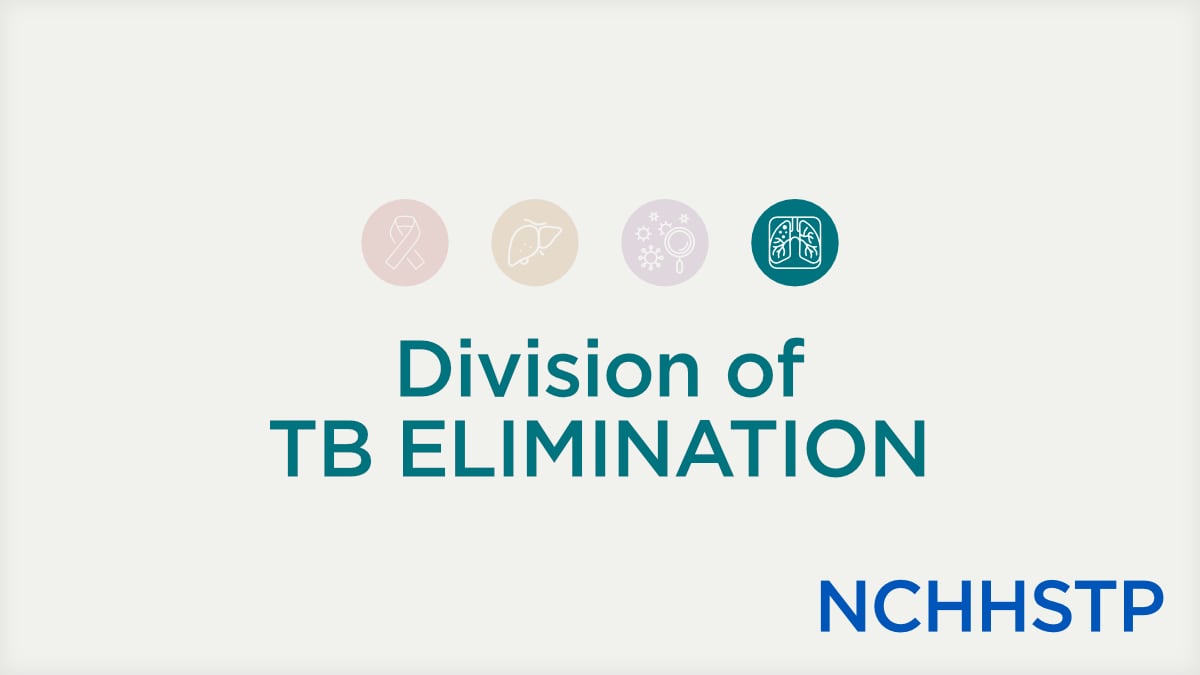At a glance
Division of Tuberculosis Elimination confronts the root causes of Tuberculosis (TB) by improving care and treatment access for the nation’s most disproportionately affected persons. We engage community, state, and national leaders to serve the public and groups at higher risk of TB infection and illness.

Our mission
To promote health and quality of life by preventing, controlling, and eventually eliminating TB in the United States.
Values
Excellence
Achieve the highest standard of performance in public health science, program, and policy
Equity
Enhance research, policy, and program efforts so all people have the best opportunity for health
Diversity and inclusion
Recruit and maintain a highly trained, inclusive, and professional workforce that reflects the communities we serve
Integrity
Be honest, accurate, and consistent
Transparency
Ensure staff, partners, and the public timely access to accurate and complete information
Priorities
- Monitor progress toward TB elimination through national TB surveillance
- Strengthen the capacity of state and local health departments and other partners to prevent, control, and eventually eliminate TB through funding, embedded staff, communication, education and training
- Serve as the national TB reference laboratory and augment laboratory capacity with state and local partners
- Conduct behavioral, epidemiological, clinical, laboratory and operational research to develop and evaluate new tools and interventions for diagnosis, treatment, prevention and control of TB
Goals
Reduce TB disease in the United States with a particular focus on reducing disparities in TB disease among disproportionately affected groups, including
- non–U.S.-born persons
- U.S.-born racial and ethnic minority groups, and
- persons experiencing homelessness or incarceration.
Why it matters
TB disease
Tuberculosis (TB) is caused by a bacterium called Mycobacterium tuberculosis. TB bacteria usually attack the lungs, but they can attack any part of the body such as the kidney, spine, and brain. TB disease is almost always curable if treated promptly with the correct medications. If not treated properly, however, TB disease can be fatal. TB usually spreads through the air from one person to another.
Latent TB infection and TB disease
Not everyone infected with TB bacteria becomes sick. As a result, two TB-related conditions exist: latent TB infection and TB disease. People with latent TB infection are not infectious and cannot spread TB bacteria to others. However, if TB bacteria become active in the body and multiply, the person will go from having latent TB infection to being sick with TB disease. Without treatment, people with latent TB infection have a 5%-10% risk of progressing to TB disease over their lifetime.
TB remains one of the world's leading infectious disease killers
Two billion people – one fourth of the world's population – are infected with M. tuberculosis More than 10 million of those people become ill with active TB disease each year, including 1,100,000 children, and over 500,000 persons with drug-resistant TB disease. TB affects millions of people around the world and in the United States; in every state; in rural areas and cities; in schools, workplaces, homes; and in many other places where people are in close contact.
Too many people still suffer from TB disease in the United States
In the early 20th century, TB disease was the leading cause of death in the United States. TB cases generally declined until the late 1980s and early 1990s when a TB resurgence occurred with over 25,000 TB cases being reported per year. The resurgence was associated with the emergence of the HIV epidemic, increased immigration from countries with high TB rates, and a deterioration of TB control programs in many areas. TB cases began to decline again after a major investment in 1993 in TB control activities at all levels of government. However, the annual rate of decline has been inadequate to achieve the nation's TB elimination goal.
Although the United States has reported record low TB cases, too many people still suffer from TB disease in this country. Up to 13 million people in the United States have latent TB infection, and without treatment, are at greater risk for developing TB disease in the future. CDC's work in the United States supports a dual approach to find and treat active TB disease and test for and treat latent TB infection to prevent progression to disease.
Resources
DTBE Strategic Plan 2022 - 2026
CDC-INFO
Have a question on tuberculosis? Need a publication? Have a comment or suggestion about our website?
CDC-INFO offers live agent services to help you find the latest and reliable science-based health information.
CDC-INFO's operating hours are 8am-8pm ET/Monday-Friday; Closed Holidays.
Telephone: 1-800-CDC-INFO (1-800-232-4636) TTY: 1-888-232-6348
